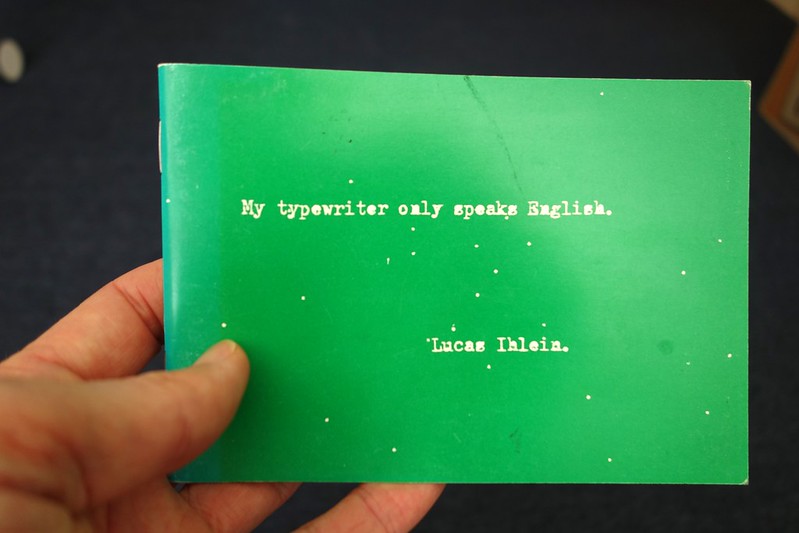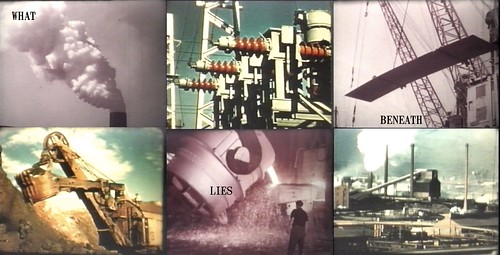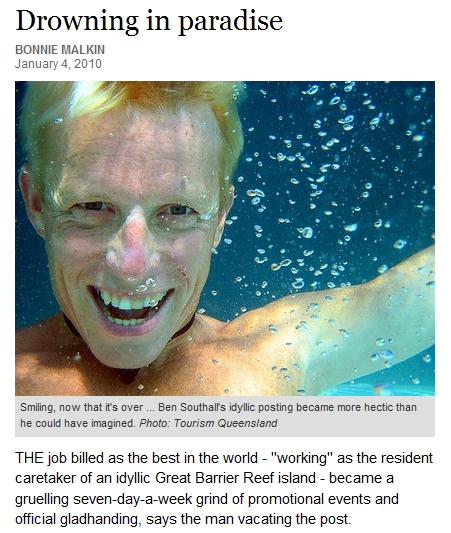Here’s a link to the Environmental Audit artist book.
An artist book drawn from the Environmental Audit project by Lucas Ihlein, at Museum of Contemporary Art, Sydney, 2010. This artist book was published to coincide with the exhibition “Diagrammatic: Works by Lucas Ihlein and Collaborators”, curated by Jasmin Stephens, Deakin University Art Gallery, 11 April – 18 May 2018, supported by the School of Communications and Creative Arts, Faculty of Arts and Education, Deakin University. Design by Fiona Hudson
Category Archives: blogging
Blogging as Art: Life Writing Online
A shorter and tighter version of the following text has been included as a chapter in the book Offshoot: Contemporary Life Writing Methodologies and Practice, edited by Quinn Eades and Donna Lee Brien. Because my chapter in the book relates to my practices of blogging, I decided to experiment with composing the text here in WordPress. It’s a bit memoir-ish, a bit technology focused… At the time I didn’t publish the blog post, and it’s languished in my draft box ever since!
* * *

When I finished my undergraduate degree at the University of Western Sydney in 1996, I realised I had been in educational institutions continuously for 16 years. I had in my final years of university developed a very reflexive (and no doubt rather pretentious) “post-conceptual” form of art practice which focused on educational processes and technologies (lectures, seminars, information transmission, assessment etc). Clearly the context within which I spent most of my time had a big impression on the kind of work I was making. It was very dry and “critical”.
Continue reading
Personal Narrative in the Digital Age
Yesterday I participated in an online discussion with Anna Poletti, as part of the 2014 Digital Writers Festival.
Our discussion panel was entitled “Personal Narrative in the Digital Age”, and was archived on Youtube. You can watch it here or here.
We spoke about autobiography and its relationship to blogging and micro-blogging platforms. One of the interesting ideas coming from Anna’s work is that autobiography doesn’t need to be “written” or even “narrative” – it can be constructed unintentionally via a fragmentary collage of phatic publishing events (like “pokes” in facebook, or the curated uploading of bio-images and other professional data).
We also talked about the current craving for “authenticity” and coherence, which may be the flipside of this more fragmented kind of identity formation process.
I enjoyed the online discussion format – and I hope that more conferences can be run this way in the future – definitely less travel per unit of discourse!
WordPress Pharma hack removal instructions
these are notes to self compiled with help from greg. not guaranteed to work for others. proceed with caution!
—
Starting from this:
– —
1. back up the database and uploads folder, and your theme folder, and scrap everything else (wordpress core files and plugins).
(copy whole wordpress folder to “mywordpressfolder.pharma” for example – you can always retrieve files you need from this folder later)
(backup database via myphpadmin to desktop)
delete original wordpress install folder.
– – –
2. run those SQL commands on the infected database:
delete from wp_options where option_name = ‘class_generic_support’;
delete from wp_options where option_name = ‘widget_generic_support’;
delete from wp_options where option_name = ‘fwp’;
delete from wp_options where option_name = ‘wp_check_hash’;
delete from wp_options where option_name = ‘ftp_credentials’;
delete from wp_options where option_name = ‘rss_7988287cd8f4f531c6b94fbdbc4e1caf’;
delete from wp_options where option_name = ‘rss_d77ee8bfba87fa91cd91469a5ba5abea’;
delete from wp_options where option_name = ‘rss_552afe0001e673901a9f2caebdd3141d’;
(make sure the quotation marks are “raw” quote marks (unformatted, not “smart”)
when inside phpmyadmin, hit the “SQL” tab and cut and paste the above code within the “run SQL query on database”
– – –
3. check the uploads folder for bad files
using the terminal (ssh shell)
cd wp-content
find uploads/ -name *php -delete
– – –
4. reinstall latest wordpress and plugins from scratch
using dreamhost one click installer, put new wordpress install where the old one used to be
point the database to your old database
however, dreamhost thinks you’re making a brand new blog, so gives a new database table prefix to this new install. it also makes the new wp-config.php file point to these new database tables.
so, you need to edit your wp-config file to set the database prefix to be wp_ (ie, the old database tables prefix)
now in phpmyadmin, delete the new database tables which dreamhost created:
(select them and then click “with selected” and then “drop” (in sql, drop means delete table)
– – –
5. Move the cleaned uploads, and theme folders to their normal place
(move them from mywordpress.pharma to the clean mywordpress folder)
in terminal:
cd ~/mydomain.com
mv mywordpress.pharma/wp-content/themes mywordpress/wp-content/
and also:
mv mywordpress.pharma/wp-content/uploads mywordpress/wp-content/
6. check it all works! If so, then move to next step…
7. Delete the mywordpress.pharma folder:
rm -rf ~/mydomain.com/mywordpress.pharma
Touchy Feely
Amy Spiers is an artist from Melbourne with an interest in participation and social engagement in art. She and Pip Stafford have curated a series of events and an exhibition in Hobart, in late January 2012, called Touchy Feely.
The preamble to Touchy Feely includes a series of questions which the participants hope to address:
- Should the “skill set” of art be instrumentalised to make a better world?
- Is there a role for hope, compassion and optimism in art, without having to take an evangelical or moralistic position?
- In our current situation, is it actually politically irresponsible to creatively express despair, unease and tension?
- Is contemporary art marked by a facile cynicism, heartlessness and nihilism?
- Or is relational and socially engaged art in Australia too sentimental, ethical and uncritical?
First of all, I want to say that it’s really great that artists are starting to draft up these kinds of questions about participatory, relational and socially-engaged art practices (or whatever else you want to call them). Hashing out the ethics and aesthetics of the work we do is an important step in “the maturing of the profession”, if you could call it that.
On the other hand, the first job of work to be done in answering these questions might be to rephrase them. For instance, “ethical” is strangely lumped in together with “sentimental” and “uncritical”; “cynicism” is likened to “nihilism”; and “hope” and “compassion” are cast as the opposites of “evangelism” and “moralism”. One of the tricky things for the participants in Touchy Feely might be to try and navigate their way through all this terminology without losing touch with the reality of actual projects. Perhaps a better way might be to dwell in the actuality of the work, and from there begin to reformulate these questions and assertions. Continue reading
New Project – WHAT LIES BENEATH

I’ve just begun a new project, in collaboration with my keen Media Arts 101 students from University of Wollongong.
It’s over here.
It will run from today til May 15, 2011. Enjoy it!
To Follow Things as I Encounter Them: Blogging, Art, and Attention
An article I wrote about two blogging projects by Lisa Kelly and Thea Rechner is now online, over here.
Here’s a little snippet from the introduction:
The tiny annotated moments of ephemeral experience are what I want to focus on here. Via a brief exploration of two blog projects by Australian artists, I hope to demonstrate the mutually transformative relationship between the practices of blogging and the quality of our attention.
It’s for a new online journal called 127 Prince – named after the address of the restaurant called FOOD, run by Carol Goodden, Gordon Matta-Clark and friends in 1971. My penpal, Randall Szott, is one of the editors. He invited me to contribute something to this first issue of the journal, which “will present and examine ideas on the art of social practice, and the social practice of art.”
I’d love to hear anyone’s thoughts about the ideas about blogging and attention that I am sloshing around over there. The journal has a comments section for discussion after each article, and the editors are keen for a dialogical process rather than using a top-down “refereed” system of selection and publishing articles.
Best Job? Boring Blog?

[…screengrab from Sydney Morning Herald, January 4, 2010…]
– – –
…and so it turns out that Ben Southall, who “won” the “best job in the world” (his assignment – to live in the lap of luxury on the islands of Queensland’s Great Barrier Reef while writing a blog about his daily life) had to work a teensy bit harder than he expected.
In this article from the Sydney Morning Herald (via The Telegraph, London) Ben explains how he had to work 19 hour days, in a “gruelling seven-day-a-week grind of promotional events and official gladhanding”. (I love the term “gladhandling”.)
Continue reading
Art as public forum: the art of blogging by Laura Hindmarsh
Laura Hindmarsh, an artist from Perth, recently wrote an article for UN Magazine entitled Art as public forum: the art of blogging.
Laura and I met just over a year ago when I was visiting Perth and working on the Bon Scott Blog. Together with her colleagues Claire and Anna, she sometimes makes projects under the name Inter Collective. The collective runs a blog parallel to their ephemeral art practices. When we met last year, we shared thoughts about our various motivations for blogging alongside interactions “in real life” (or as Lauren would say, “IRL”).
For one thing, as artists operating within an educational institution (at the time Laura was an honours students at UWA in Perth) blogging gave visibility to her otherwise “blink and you miss it” / “you had to be there” practices – making those practices available for “assessment” by the university system. But of course there’s more to it than that…
You can download Laura’s article in UN Magazine here (but you have to get the whole magazine as a 12MB pdf). For ease of use, I reproduce it below.
Laura also has some interesting ideas about the effects of keeping a blog on the experience of time. In one email she sent me, she used the term “structural intervalling” as a way of thinking about how daily blogging breaks time down into chunks which become manageable… but there wasn’t room for such complexities in this essay. Hopefully we’ll hear more on these ideas from Laura soon…
On with her article–
Continue reading
The Blogger’s Voice and the Wave of Learning
[…to follow on from my post about Two Types of Blogs… here is a post related to some of the processes involved in what I, in that post, called “type 2 blogging”…]
Last November, after I attended a permaculture course run by Kirsten and Nick, Kirsten asked me some questions about the nuts and bolts of blogging.
She asked, “In your blogs, how do you find your voice?”
This is an interesting question. What does it even mean, “voice”?
Continue reading